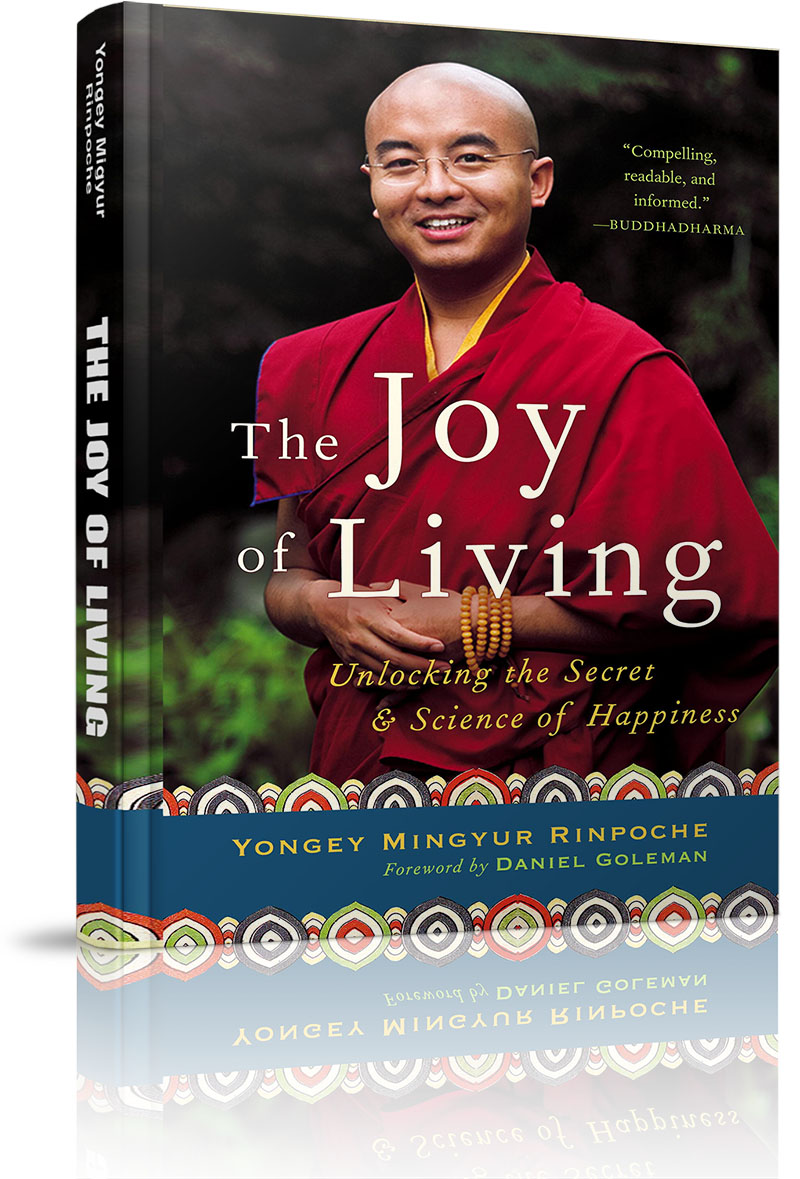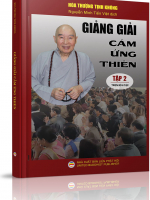Khi mọi con đường đều bế tắc, đừng từ bỏ. Hãy tự vạch ra con đường của chính mình. (When all the ways stop, do not give up. Draw a way on your own.)Sưu tầm
Trong sự tu tập nhẫn nhục, kẻ oán thù là người thầy tốt nhất của ta. (In the practice of tolerance, one's enemy is the best teacher.)Đức Đạt-lai Lạt-ma XIV
Ý dẫn đầu các pháp, ý làm chủ, ý tạo; nếu với ý ô nhiễm, nói lên hay hành động, khổ não bước theo sau, như xe, chân vật kéo.Kinh Pháp Cú (Kệ số 1)
Hãy sống tốt bất cứ khi nào có thể, và điều đó ai cũng làm được cả.Đức Đạt-lai Lạt-ma XIV
Một số người mang lại niềm vui cho bất cứ nơi nào họ đến, một số người khác tạo ra niềm vui khi họ rời đi. (Some cause happiness wherever they go; others whenever they go.)Oscar Wilde
Ta như thầy thuốc, biết bệnh cho thuốc. Người bệnh chịu uống thuốc ấy hay không, chẳng phải lỗi thầy thuốc. Lại cũng như người khéo chỉ đường, chỉ cho mọi người con đường tốt. Nghe rồi mà chẳng đi theo, thật chẳng phải lỗi người chỉ đường.Kinh Lời dạy cuối cùng
Nếu muốn có những điều chưa từng có, bạn phải làm những việc chưa từng làm.Sưu tầm
Nếu quyết tâm đạt đến thành công đủ mạnh, thất bại sẽ không bao giờ đánh gục được tôi. (Failure will never overtake me if my determination to succeed is strong enough.)Og Mandino
Người hiền lìa bỏ không bàn đến những điều tham dục.Kẻ trí không còn niệm mừng lo, nên chẳng bị lay động vì sự khổ hay vui.Kinh Pháp cú (Kệ số 83)
Tôi phản đối bạo lực vì ngay cả khi nó có vẻ như điều tốt đẹp thì đó cũng chỉ là tạm thời, nhưng tội ác nó tạo ra thì tồn tại mãi mãi. (I object to violence because when it appears to do good, the good is only temporary; the evil it does is permanent.)Mahatma Gandhi
Đừng làm cho người khác những gì mà bạn sẽ tức giận nếu họ làm với bạn. (Do not do to others what angers you if done to you by others. )Socrates
Trang chủ »» Danh mục »» SÁCH ANH NGỮ HOẶC SONG NGỮ ANH-VIỆT »» The Joy of Living »» 12. Working with thoughts and feelings »»
The Joy of Living
»» 12. Working with thoughts and feelings
 Xem Mục lục
Xem Mục lục  Vietnamese || Đối chiếu song ngữ
Vietnamese || Đối chiếu song ngữ- none
- Introduction
- Part One: The Ground - 1. The Journey Begins
- 2. The inner symphony
- 3. Beyond the mind, beyond the brain
- Emptiness: The reality beyond reality
- The relativity of perception
- 6. The Gift of Clarity
- 7. Compassion: Survival of the kindest
- 8. Why are we unhappy?
- Part Two: The Path - 9. Finding Your Balance
- 10. Simply resting: The first step
- 11. Next steps: Resting on objects
- »» 12. Working with thoughts and feelings
- 13. Compassion: Opening the heart of the mind
- 14. The how, when, and where of practice
- Part Three: The fruit - 15. Problems and Possibility
- 16. An inside job
- 17. The biology of happiness
- 18. Moving on
- none

- JAMGON KONGTRUL Tire Torch of Certainty, translated by Judith Hanson
Long ago in India, there was a cowherd who’d spent most of his life looking after his master’s cows. Finally, at the age of sixty or so, he realized, “This is a boring job. Every day it’s the same thing. Bring the cows out to pasture, watch them graze, and bring them back home. What am I supposed to learn from this?” After thinking about the matter for a while, he decided he would give up his job and learn how to meditate, so he could at least free himself from the monotony of samsara.
After giving up his job, he traveled to the mountains. One day he saw a cave, in which sat a mahasiddha. Upon seeing the mahasiddha, the cowherd felt very happy, and approached him for advice on how to meditate. The master agreed and gave the cowherd basic instructions on how to meditate using thoughts as a support. After receiving the instructions, the cowherd settled in a nearby cave and set himself to practice.
Like most of us, he ran into problems right away. During all his years as a cowherd, he’d become very fond of his cows, and when he tried to practice what the mahasiddha had taught him, the only thoughts and images that appeared in his mind were of the cows he’d taken care of. Though he tried hard to block the thoughts, the cows kept appearing; and the harder he tried, the more clearly they appeared.
Finally, exhausted, he went to the master and told him he was having terrible trouble carrying out his instructions. When the mahasiddha asked him what the problem was, the cowherd explained his difficulty.
“That’s not really a problem,” the master told him. “I can teach you another method. It’s called cow meditation.”
“What?” the cowherd asked, very surprised.
“I’m serious,” the mahasiddha replied. “All you need to do is watch the images of the cows you see. Watch them as you lead them out to the pasture, as they graze, as you lead them back home to the farm. Whatever thoughts about cows appear to you, just watch them.”
So the cowherd returned to his cave and sat down to practice with this new set of instructions. Because he wasn’t trying to block his thoughts, this time his meditation proceeded very easily He began to feel very peaceful and happy. He didn’t miss his cows. And his mind grew calmer, more balanced, and more pliable.
After a while he went back to the mahasiddha and said, “Okay, now I’ve completed cow meditation. What do I do next?”
The master replied, “Very good. Now that you’ve learned to calm your mind, I’ll teach you the second level of cow meditation. Here are the instructions: Meditate on your own body as a cow.”
So the cowherd went back to his cave and began practicing as instructed, thinking, Okay, now I’m a cow. I have horns and hooves, I make the sound moo, I eat grass... As he kept on with this practice, he found that his mind became even more peaceful and happy than before. When he felt he’d mastered this practice, he returned to the master and asked if there was a third level of instruction.
“Yes,” the mahasiddha replied slowly. “For the third level of cow meditation, you have to focus on having horns.”
So, once again, the cowherd returned to his cave to carry out his teacher’s instructions, focusing only on the thought of having horns. He concentrated on the size of the horns, their placement, their color, the feeling of their weight on either side of his head. After a few months of practicing this way, he got up one morning and started to go outside to relieve himself. But as he tried to leave his cave, he felt something butting up against the sides of the cave’s walls, making it impossible for him to get out. He reached up to figure out what the obstacle was, and found to his surprise that two very long horns had sprouted from the sides of his head.
Turning his body sideways, he finally managed to get out of the cave, and ran, terrified, to his teacher.
“Look what happened!” he shouted. “You gave me this cow meditation, and now I’ve grown horns! This is horrible! It’s like a nightmare!”
The mahasiddha laughed happily. “No, it’s wonderful!” he exclaimed. “You’ve mastered the third level of cow meditation! Now you have to practice the fourth level. You have to think, ‘Now I’m not a cow and I don’t have horns.’”
Dutifully, the cowherd went back to his cave and practiced the fourth level of cow meditation, thinking, Now I don’t have horns, now I don’t have horns, now I don’t have horns... After a few days of practicing in this way, he woke up one morning and discovered that he could walk outside his cave without any difficulty at all. The horns had disappeared.
Surprised, he ran to the master, announcing, “Look, I don’t have horns anymore! How does this happen? When I thought I had horns, they appeared. When I thought I didn’t have horns, they disappeared. Why?”
The mahasiddha replied, “The horns came and went because of the way you focused your mind. The mind is very powerful. It can make experiences seem very real, and it can make them appear unreal.”
“Oh,” the cowherd said.
The master went on to explain, “Horns aren’t the only things that appear and disappear according to the focus of your mind. Everything is like that. Your body, other people - the whole world. Their nature is emptiness. Nothing truly exists except in your mind’s perception. Recognizing that is true vision. First you need to calm your mind, and then you learn how to see things clearly. This is the fifth level of cow meditation, learning to balance both tranquillity and true vision.”
The cowherd returned once more to his cave, meditating with tranquillity and true vision. After a few years he became a mahasiddha himself, his mind having become calm and free from the circle of samsaric suffering.
There aren’t many cowherds in the world anymore, though maybe it would be a more peaceful place if there were. Still, if you dare, you could practice like the old cowherd, but using a different object - like a car. After a few years of car meditation, you could end up a great master like the old cowherd. Of course, you’d have to be willing to spend a few years growing headlights, doors, seat belts, and maybe a trunk - and then learning how to make them disappear. And while you’re practicing, you might find it hard to get in and out of your office elevator, and your coworkers might think it a little strange if you answered their questions with a honk instead of words.
I’m joking, of course. There are much easier ways of working with your thoughts than learning how to sprout cow horns or taillights.
USING YOUR THOUGHTS
When thoughts arise, instead of regarding them as faults, recognize them, to be empty and leave them just as they are.
- GOTSANGPA, The Highest Continuum, translated by Elizabeth M. Callahan
Even after you make friends with your five senses and learn to use sensory input as a support for meditation, you may find some difficulty in dealing with the “crazy monkey,” the mental consciousness that enjoys leaping around, creating confusion, doubt, and uncertainty. Even if you learn to rest in simple sensory awareness, the crazy monkey mind will always be looking for new ways to interrupt whatever calmness, clarity, and openness you’ve achieved by offering a different and disturbing interpretation of events - a kind of psychological equivalent of throwing cushions around and gobbling up altar offerings. Difficult as it might be to deal with, the crazy monkey’s interference is not a “bad” thing; it’s simply a matter of entrenched neuronal patterns seeking to reassert themselves. The crazy monkey is essentially a neurologically programmed response to threats to human survival. Instead of getting angry, work with it. Why not generate a sense of gratitude toward its activity in helping us to survive? Once you’ve learned to work with your senses, however, you need to deal with the crazy monkey itself, using the thoughts and emotions it generates as supports for calming the mind. And once you begin to work with these thoughts and emotions, you’ll begin to discover a whole new dimension of freedom from ancient, survival-based patterns. You begin the process by questioning whether every thought you think, every feeling you feel, is a fact or a habit.
It’s often the case that the first lessons we learn in life are the most important ones. “Look both ways before crossing the street.” “Don’t take candy from a stranger.” “Don’t play with matches.” Children hear these things from their parents again and again, for good reason; and yet, as important as these childhood lessons are, we always seem to forget them. Human beings, by nature, take risks. That’s how we learn. But some lessons can be deadly, while others can cause lasting pain. That’s why, even as adults, we have to repeat the lessons we learned as children, and pass them on to our own children. Certain lessons just bear repeating.
So please forgive me if I reiterate something I learned early on in my formal training. Thinking is the natural activity of the mind. Meditation is not about stopping your thoughts. Meditation is simply a process of resting the mind in its natural state, which is open to and naturally aware of thoughts, emotions, and sensations as they occur. The mind is like a river, and, as with a river, there’s no point in trying to stop its flow. You may as well try to stop your heart from beating or your lungs from breathing. What purpose would that serve?
But that doesn’t mean you have to be a slave to whatever your mind produces. When you don’t understand the nature and origin of your thoughts, your thoughts use you. When the Buddha recognized the nature of his mind, he reversed the process. He showed us how we can use our thoughts instead of being used by them.
When I first started training formally with my father, I was very nervous. I thought for sure he’d see how active my mind was and how many crazy thoughts leaped through it every second, and that he’d send me away because I wasn’t a good candidate for learning. In one way, I was right. He did see how crazy my mind was. But I was wrong in thinking I was a bad candidate for meditation.
What he told me, along with his other students, was that no matter how many thoughts pass through your mind while you’re meditating, it’s okay. If a hundred thoughts pass through your mind in the space of a minute, you have a hundred supports for meditation. “How lucky you are!” he used to say. “If the crazy monkey inside your head is jumping all over the place, that’s wonderful! Just watch the crazy monkey jumping around. Every jump, every thought, every distraction, like every sensory object, is a support for meditation. If you find yourself struggling with a lot of distractions, you can use every distraction as an object of meditation. Then they cease to be distractions and become supports for your meditation practice.”
But he also warned us not to try to hold on to each thought as it arises. Whatever passes through the mind, we should just watch it come and go, lightly and without attachment, the way we’d practiced gently resting our attention on forms, sounds, or smells.
Watching thoughts is a bit like running to catch a bus. Just as you reach the bus stop, the bus is pulling away, so you have to wait for the next bus to come. In the same way, there’s often a gap between thoughts - maybe it lasts for just a split second, but still, there’s a gap. That gap is the experience of the complete openness of natural mind. Then another thought pops up, and when it disappears, there’s another gap. Then another thought comes and goes, followed by another gap.
The process of observing your thoughts goes on and on in this way: thoughts followed by gaps, followed by thoughts, followed by gaps. If you continue this practice, very gradually the gaps become longer and longer, and your experience of resting the mind as it is becomes more direct. So there are two basic states of mind - with thought and without thought - and both are supports for meditation.
In the beginning, attention to thoughts always wavers. That’s fine. If you find your mind wandering, just allow yourself to be aware of your mind wandering. Even daydreams can become the support for meditation if you allow your awareness to gently permeate them.
And when you suddenly remember, Oops, I was supposed to be watching my thoughts, I was supposed to be focusing on form, I was supposed to be listening to sounds, I was supposed to be watching my thoughts, just bring your attention back to whatever it was you were supposed to attend to. The great secret about these “Oops” moments is that they’re actually split-second experiences of your fundamental nature.
It would be nice to hang on to every “Oops” you experience. But you can’t. If you try, they harden into concepts - ideas about what “Oops” is supposed to mean. The good news is that the more you practice, the more “Oopses” you’re likely to experience. And gradually these “Oopses” start to accumulate, until one day “Oops” becomes a natural state of mind, a release from habitual patterns of neuronal gossip that allows you to look at any thought, any feeling, and any situation with total freedom and openness.
“Oops” is a wonderful thing.
So now, try to practice “Oopsing” by bringing attention to your thoughts as supports for meditation. Just as in every other practice, it’s important to start by just allowing your mind to rest in objectless awareness for a few moments, and then start watching your thoughts. Don’t try to practice for very long. Give yourself a few minutes.
First, just rest your mind for a minute. . . .
Then let your mind become aware of your thoughts for maybe two minutes. . . .
And rest your mind again for a minute. . . .
When you’re done, ask yourself what the experience was like for you. Did you have a lot of “Oopses”? Were you able to see your thoughts very clearly? Or were they hazy and indistinct? Or did they just vanish into thin air as soon as you tried to look at them?
When I teach this practice in public lectures, and afterward ask people about their experience, I get a lot of different answers. Some people say that when they try to watch their thoughts, the thoughts themselves become kind of sneaky. They vanish instantly or don’t arise very clearly. Others say that their thoughts become very solid and clear, appearing in their minds as words, and they’re able to watch thoughts come and go without much attachment or disturbance.
Now I’m going to let you in on a big secret: There is no secret! Both extremes that people describe - and anything in between - are experiences of meditation. If you’re afraid of your thoughts, you’re giving them power over you, because they seem so solid and real, so true. And the more afraid of them you are, the more powerful they appear to be. But when you start to observe your thoughts, the power you give to them begins to fade. This can happen in one of two ways.
Sometimes, as mentioned earlier, if you watch your thoughts closely, you’ll start to notice that they appear and disappear quite quickly, leaving little gaps between them. At first the gap between one thought and the next may not be very long; but with practice the gaps grow longer and your mind begins to rest more peacefully and openly in objectless meditation.
At other times, the simple practice of observing thoughts becomes something like watching TV or a movie. On the TV or movie screen, lots of things may be going on, but you are not actually in the movie or on the TV screen, are you? There’s a little bit of space between yourself and whatever you’re watching. When you practice observing your thoughts, you can actually experience that same sort of little bit of space between yourself and your thoughts. You’re not really creating this space, because it was always there; you’re merely allowing yourself to notice it. And through becoming aware of this space you can actually begin to enjoy watching your thoughts - even if they’re scary - without being immersed in or controlled by them. Just let the thoughts spin out in their own way, the way adults watch children at play - building sand castles, fighting mock battles with plastic soldiers, or engaged in other games. The children are intensely involved in their activities, but adults simply watch and laugh affectionately at their seriousness.
Whichever of these experiences comes up for you is great, and no doubt the experiences will vary as you practice. Sometimes you’ll observe your thoughts quite closely, seeing them come and go, noticing the gaps between them. Sometimes you’ll simply watch them with that little bit of distance. Meditation is so much easier than most people think: Whatever you experience, as long as you are aware of what’s going on, is meditation!
The only point at which your experience shifts from meditation into something else occurs when you try to control or change whatever you might be experiencing. But if you bring some awareness to your attempt to control your experience, that’s meditation, too.
Of course, some people don’t see any thoughts at all; their minds just go blank. That’s fine, too. It’s your mind you’re working with, so no one can judge you; no one can grade you on your experience. Meditation is a uniquely personal process, and no two people’s experiences are alike. As you continue practicing, you’ll undoubtedly find that your own experience shifts sometimes from day to day, from practice period to practice period. Sometimes you may find your thoughts are very clear and easy to observe; sometimes they may seem quite vague and slipper)’. Sometimes you may find that your mind becomes dull or foggy when you sit down to practice. That’s okay, too. The sense of dullness is little more than a chain of neurons chattering with one another in response to your intention to meditate, and you can simply observe the dullness or whatever else you may feel. Observation, giving bare attention to whatever you happen to be experiencing at a particular moment, is meditation. Even the neuronal gossip that manifests as a thought like “I don’t know how to meditate” can be a support for meditation as long as you observe it.
As long as you maintain awareness or mindfulness, no matter what happens when you practice, your practice is meditation. If you watch your thoughts, that is meditation. If you can’t watch your thoughts, that is meditation, too. Any of these experiences can be supports for meditation. The essential thing is to maintain awareness, no matter what thoughts, emotions, or sensations occur. If you remember that awareness of whatever occurs is meditation, then meditation becomes much easier than you may think.
THE SPECIAL CASE OF UNPLEASANT THOUGHTS
No matter what thought occurs, don’t try to stop it.
- THE NINTH GYALWANG KARMAPA,
Mahamudra: The Ocean of Definitive Meaning, translated by Elizabeth M. Callahan
Especially if you’re new to meditation, it can be very difficult to observe thoughts related to unpleasant experiences - particularly those aligned with strong emotions such as jealousy, anger, fear, or envy - with bare attention. Such unpleasant thoughts can be so strong and persistent that it’s easy to get caught up in following after them. I don’t have enough fingers and toes to count the number of people I’ve met who’ve discussed this problem with me, especially if the thoughts they’re experiencing relate to fights they’ve had with someone at home, in the office, or some other place that they can’t forget. Day after day, their minds keep going back to the ideas they attach to what was said and done, and they find themselves caught up in thinking about how terrible the other person was, what they could or should have said at the time, and what they’d like to do to get revenge.
The best way to work with these kinds of thoughts is to step back and rest your mind in objectless shinay for a minute, and then bring your attention to each thought and the ideas that revolve around it, observing both directly for a few minutes, just as you would observe the shape or color of a form. Allow yourself to alternate between resting your mind in objectless meditation and bringing your attention back to the same thoughts.
When you work with negative thoughts in this way, two things happen. (Don’t worry - neither one of them involves growing horns!) First, as you rest in awareness, your mind begins to settle. Second, you’ll find that your attention to particular thoughts or stories comes and goes, just the way it does when working with forms, sounds, and other sensory supports. And as that thought or story is interrupted by other issues - like folding the laundry, buying groceries, or preparing for a meeting - the unpleasant ideas gradually lose their grip on your mind. You begin to realize that they’re not as solid or powerful as they first appeared. It’s more like a busy signal on the telephone - annoying, perhaps, but nothing you can’t deal with.
When you work with unpleasant thoughts in this way, they become assets to mental stability rather than liabilities - like adding weight to the bar when you’re exercising in a gym. You’re developing psychological muscles to cope with greater and greater levels of stress.
USING EMOTIONS
One does not have to feel totally at the mercy of one’s emotion.
- KALU RINPOCHE, Gently Whispered, edited by Elizabeth Selanda
Because emotions tend to be vivid and enduring, they can be even more useful than thoughts as supports for meditation. My father and my other teachers impressed on me that there are three basic categories of emotion: positive, negative, and neutral. Positive emotions - such as love, compassion, friendship, and loyalty - strengthen the mind, build our confidence, and enhance our ability to assist those in need of help. Some translations of Buddhist texts refer to such emotions, and the actions connected with them, as virtuous” - a translation that, at least as I’ve observed among Western audiences, seems to have some sort of moral association. In fact, there is no moral or ethical association connected with such actions and emotions. As explained to me by a student who has some knowledge of the meanings of Western words, the word virtue, as applied to the translation of the Tibetan term gewa, is more closely related to the ancient meaning of “virtue” as potency or effectiveness in terms of healing power.
Negative emotions, such as fear, anger, sadness, jealousy, grief, or envy - often translated as ‘‘nonvirtuous” (or, in Tibetan, mi-gewa) feelings - are emotions that tend to weaken the mind, undermine confidence, and increase fear.
More or less neutral feelings, meanwhile, basically consist of ambivalent responses - the kinds of feelings we might have toward a pencil, a piece of paper, or a staple remover. Try as you might, it’s hard to feel positively or negatively toward a pencil!
The method of using emotions as supports differs depending on the type of emotion you’re experiencing. If you’re feeling a positive emotion, the type that strengthens your mind, you can focus on both the feeling and the object of the feeling. For example, if you’re feeling love for a child, you can rest your attention on both the child and the love you feel for him or her. If you’re feeling compassion for someone in trouble, you can focus on the person needing help and your feeling of compassion. In this way, the object of your emotion becomes a support for the emotion itself, while the emotion becomes a support for focusing on the object that inspires the emotion.
Conversely, holding an object of negative emotion in attention tends to reinforce a mental image of that person, situation, or thing as something bad in itself. No matter how much you try to cultivate compassion, confidence, or any other positive feeling, your mind will almost automatically associate the object with the negative emotion: “Whoa, that one is bad. Fight it. Make it go away. Or run away.”
A more constructive approach to negative emotions, similar to working with negative thoughts, is simply to rest your attention on the emotion itself rather than on its object. Just look at the emotion without analyzing it intellectually. Don’t try to hold on to it and don’t try to block it. Just observe it. When you do this, the emotion won’t seem as big or powerful as it initially did.
This is the same sort of process I practiced during my first year of retreat, when the fear and anxiety I felt around other people forced me to run back to sit alone in my own room. Once I began to simply observe my fears, I began to see that they weren’t solid, indivisible monsters that I could never overcome, but instead a series of small, fleeting sensations and images that popped in and out of awareness so rapidly that they only gave the semblance of being solid and whole (similar, as I would later discover, to the way a whirling mass of subatomic particles produces the appearance of something indivisible and solid). And after observing my fear this way, I started to think, Hmm, that’s interesting. This fear isn’t so big and powerful at all. In fact, it’s pretty harmless. It’s just a bunch of transitory sensations that appear, hang around for a second or two, and then simply disappear.
This didn’t happen overnight, of course. I had to spend a few weeks completely immersed in the process, like some sort of mad scientist utterly absorbed in an experiment. I also had the benefit of several years of training to support me.
But I emerged from the experience with a new appreciation for all the different methods the Buddha had provided so many centuries ago to assist people he would never personally know in overcoming such difficulties. Later, when I began to learn more about the structure and function of the brain and the insights into the nature of reality described by modern physicists, I was even more impressed by the parallels between the techniques the Buddha had arrived at through introspection and the explanations achieved through objective observation as to why they worked.
Sometimes, though, the object associated with a negative emotion - whether it’s a person, a place, or an event - is just too clear or present to ignore. If that’s the case, by all means don’t try to block it. Use it. Rest your attention on the form, smell, taste, or any of the other sensory perceptions you learned to work with earlier on. In this way, the object of the emotion can become, in itself, a very powerful support for meditation.
This approach is useful when you begin to work directly with the basic mental afflictions described in Part One of this book. When I was introduced to the subject of mental afflictions, I thought, Oh no, I’m flawed. I’m ignorant. I have a lot of attachments and aversions. I’m stuck with unhappiness for the rest of my life. But then I heard an old proverb. I don’t know if it’s based on fact, but it goes something like this: “Peacocks eat poison, and the poison they eat is transformed into beautiful feathers.”
Having spent most of my early life crushed into a little ball of fear and anxiety, I know how strong mental afflictions can be. I spent thirteen years thinking I would die - and sometimes hoping I would, just to be free of the fear I felt. It wasn’t until I entered retreat and had to face these afflictions head-on that I learned that ignorance, attachment, and aversion were the material I was given to work with, which, like the poison peacocks eat, turned out to be the source of great blessing.
Every mental affliction is actually the basis of wisdom. If we get caught up in our afflictions or try to repress them, we just end up creating more problems for ourselves. If, instead, we look at them directly, the things we fear will kill us are gradually transformed into the strongest supports for meditation we could ever hope for.
Mental afflictions are not enemies. They’re our friends.
That’s a hard truth to accept. But every time you recoil from it, think of the peacock. Poison doesn’t taste very good. But if you swallow it, it turns into beauty.
So, in our final lesson in practice, we’re going to look at meditative antidotes we can apply when facing our most fearsome and unpleasant experiences. As we examine these practices, we’ll come to recognize that the degree to which any experience repels, frightens, or seems to weaken us is equal to the degree to which such experiences can make us stronger, more confident, more open, and more able to accept the infinite possibilities of our Buddha nature.
MUA THỈNH KINH SÁCH PHẬT HỌC
DO NXB LIÊN PHẬT HỘI PHÁT HÀNH
Mua sách qua Amazon sẽ được gửi đến tận nhà - trên toàn nước Mỹ, Canada, Âu châu và Úc châu.
Quý vị đang truy cập từ IP 216.73.216.110 và chưa ghi danh hoặc đăng nhập trên máy tính này. Nếu là thành viên, quý vị chỉ cần đăng nhập một lần duy nhất trên thiết bị truy cập, bằng email và mật khẩu đã chọn.
Chúng tôi khuyến khích việc ghi danh thành viên ,để thuận tiện trong việc chia sẻ thông tin, chia sẻ kinh nghiệm sống giữa các thành viên, đồng thời quý vị cũng sẽ nhận được sự hỗ trợ kỹ thuật từ Ban Quản Trị trong quá trình sử dụng website này.
Việc ghi danh là hoàn toàn miễn phí và tự nguyện.
Ghi danh hoặc đăng nhập
... ...


 Trang chủ
Trang chủ










